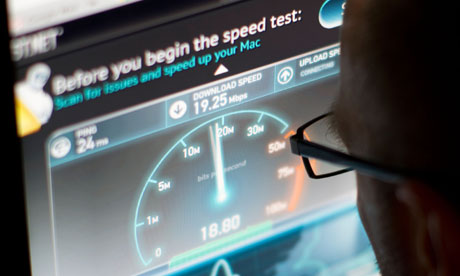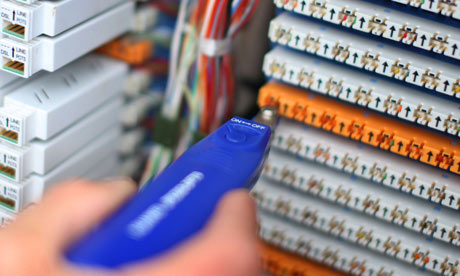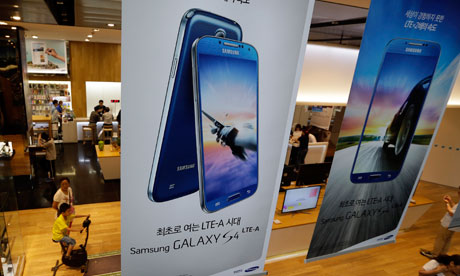
The Samsung GS4 Google Play Edition has a simplified lock screen (left) and notifications shade.
(Credit:
Lynn La/CNET)
CNET's Marguerite Reardon helps a reader decide if the Google Play
Edition of the Samsung Galaxy S4 or the HTC One is right for him. And
she offers some advice about turning any Android phone into a "pure"
Google phone.
There is something appealing about a Google Android smartphone running pure Android.
You don't have to deal with the added bloatware and unwanted apps
from device makers and wireless operators, all of which can't be
removed. And best of all you're guaranteed to get all of Google's
Android
software updates when they are released. There's no waiting months for
an update or wondering if your smartphone will ever get the update.

So you'd think that the new Google Play editions of the
Samsung Galaxy S4
and the HTC One, which Google is now selling without the layered-on
manufacturer software, will fly off the shelves. While the idea sounds
great in theory, the reality is that consumers have to give up some
nifty functionality and they'll have to pay a pretty penny for the Nexus
"pure" Google experience.
In this edition of Ask Maggie I offer some thoughts on whether the
hefty price tag and the sacrificed features are worth it. I also advise
another reader who is looking to turn his Samsung smartphone into a
Google "experience" device.
Should I get a Google Play Edition smartphone?
Dear Maggie,
I appreciate the input you give your readers so I wanted to pick your
brain about something. I am interested in getting one of the new "pure"
Google phones: Samsung Galaxy S4 or HTC One. I like the idea of being
able to get the latest Android software updates as they come out.
I am currently in the market for a new smartphone as I am using the
iPhone 4
since it was released on Verizon. I'm well aware that these "Google
phones" are only for AT&T and T-Mobile. I'm ok with that and was
thinking about switching carriers anyway as well as switching from the
iPhone to an Android phone.
But I have some concerns, specifically about getting a pure Google phone. I was hoping you could help answer them for me.
1)
How do you think the camera will function on the Google version of the
GS4 and HTC One as compared to the devices that are sold by the
carriers?
2) Is having the benefit of knowing that my phone will
get every Google Android update when it's released really worth it? Or
is that idea overrated?
Thank you for taking the time to read my email!
Crazy Indecisive JB Dear Crazy Indecisive JB,
Let me start by saying that you are asking all the right questions.
There are definitely some benefits to getting a pure Google experience
phone, such as a guarantee that you'll get all the latest Android
software updates. But it comes at price. Not only is the cost of the
device a lot more, but you also have to sacrifice some key features of
these devices.
A hefty price tag The HTC One Google Play Edition and the Samsung Galaxy S4 One Google Edition
are not sold through a wireless carrier, and therefore they aren't
subsidized, which means they're expensive. The HTC One Google Edition
sells for about $600 while the Samsung Galaxy S4 Google Play Edition
goes for $650.
At such a hefty price tag, it's important to make sure, you're getting the right device for you.
Of
course, at the unsubsidized price, it also means the device is unlocked
and there is no carrier contract to worry about. That said, since these
are GSM phones, they will only work on two of the four major U.S.
carriers, AT&T and T-Mobile. But it sounds like you're all right
with switching from Verizon anyway.
If you think about it, these prices aren't outrageous considering
that the prices are comparable to what most smartphones cost without a
service contract. But it's still quite a bit more than Google's most
recent Nexus device, the Nexus 4, which Google sells for $300.
But
with a contract or some kind of payment plan, carriers are selling
these devices for between $100 and $200. The Galaxy S4 is available on
AT&T and Verizon for $200, while Sprint is offering it for $150 and
T-Mobile is offering it for $99 down and $20 a month for 24 months. The
HTC One, which is available on all four major carriers, except Verizon,
is also reasonably priced.
What's the big deal about "pure" Google devices?
The Google Android operating system is open-source software for mobile
devices. And because it's open source, handset makers can develop their
own software "skins" on top of the Android OS. Samsung's "skin" is
called TouchWiz and HTC has one called Sense.
This software not
only changes the user interface of these Android devices, but the
manufacturers have also layered in additional software features. In the
new Samsung GS4, that includes things like the Air Gesture feature that
allows you to control your smartphone with hand gestures or the Smart
Stay feature that keeps the display lit when it senses your eyes looking
at it. It also happens to include a lot of the nifty camera features on
the HTC One.
Some Google purists hate the manufacturer skins on their
devices. And to be honest, sometimes the user interfaces can seem
cluttered. Also it means that the user experience isn't always
consistent across Android devices from different manufacturers. This
might annoy people who want to stay within the Android ecosystem but
don't always buy devices from the same device manufacturer. That said,
it often means that the experience is very similar among devices made by
a particular phone maker.
One of the downsides of devices with
this layered software is that it's the main reason why it takes so long
for new Android updates to propagate through existing products. Because
the new releases of Android must be tested and tweaked to work on
devices sporting Samsung TouchWiz and HTC Sense, it often means it can
take months before devices already in the market get updates. And often,
the updates are further delayed, because wireless operators must also
test how the new software updates will work on their networks.
Another
issue with these devices is that carriers also load up smartphones with
their own "bloatware" apps that cannot be removed from the device.
To
help alleviate this issue and to make sure that new Android updates are
pushed out as soon as possible, Google started its Nexus program. These
phones sport the pure Google Android software sans any additional
software or apps from manufacturers or wireless operators. Google's
Nexus devices are not built by Google per se, instead Google works with
manufacturers to design products from the ground up.
In this
sense, the Google Play Editions of the Galaxy S4 and HTC One are not
pure Nexus devices. They were not designed with Google's input. But they
are running the Nexus Google Android software. And as a result, the
interface on these devices looks just like any other Nexus smartphone,
such as the Nexus 4.
There are certainly benefits to getting the
Google Play Edition of either the Samsung Galaxy S4 or the HTC One. And
unlike the Nexus 4, these devices sport the line hardware and operate
over 4G LTE wireless networks. Except for the software, these devices
are exactly like the ones that the carriers are selling.
The HTC
One has been praised for its all-aluminum casing and sleek design. The
device also sports 32GB of onboard storage for apps, photos, videos,
music and other media. It also has a 4.7-inch LCD screen that CNET
Reviews editor Brian Bennett has described as "arresting" offering a
sharp1080p resolution (468 ppi) along with vivid colors.
The
Samsung Galaxy S4 also sports some terrific specifications too,
including a quad-core processor and a 5-inch 1080p screen, and 16GB of
storage space with a SD card slot for even more storage. Both devices
operate on 4G LTE networks.
So first and foremost, you are
getting topnotch hardware. And because it's pure Google, you'll get the
new Android software updates without delay.
Another benefit,
especially for GS4 users is that by ditching Samsung's TouchWiz
software, you will actually be able to get use more of the device
storage on your Google Edition GS4 as compared to the Samsung version.
When
CNET Reviews editor Lynn La tested the Google Edition Samsung Galaxy
S4, she found that instead of only having 9.10GB of available storage on
the 16GB version of the Samsung GS4, you can get 12.65GB of storage
space on the Google Edition model.
The reason is simple. All the
bells and whistles that Samsung has packed into its TouchWiz based GS4
take up a lot of storage capacity on the phone, which means there is
less available storage for your apps, music and photos. This has been a
contentious issue for Samsung Galaxy customers, especially those on
Verizon, who only have the option of buying the 16GB version of the
device. AT&T sells the 32GB version.


 I
was asking the company's president, John Trobough, "As a consumer, why
should I care?" I mean, these big companies have money to throw at this
kind of stuff, so I'm sure they've figured it out. Besides, what do I
care if some chicken nugget-producing enterprise gets hacked? Or if some
big bucks mobile company has a security breech when a clever employee outsources his work and watches cat videos instead? Some of those videos are pretty good.
I
was asking the company's president, John Trobough, "As a consumer, why
should I care?" I mean, these big companies have money to throw at this
kind of stuff, so I'm sure they've figured it out. Besides, what do I
care if some chicken nugget-producing enterprise gets hacked? Or if some
big bucks mobile company has a security breech when a clever employee outsources his work and watches cat videos instead? Some of those videos are pretty good.















